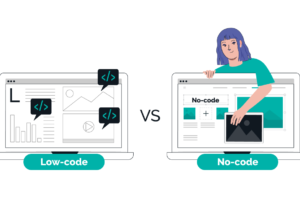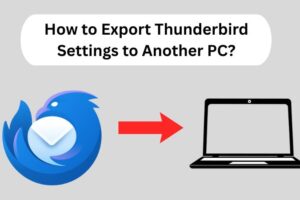Magento is a solid e-commerce platform agile, scalable and highly customizable. The frontend theme is truly of the essence to any Magento store as it describes how the website looks, works and interacts with a user. Traditionally, the Luma theme has played a role more or less akin to a standard Magento default, providing an essential, very bare-bone experience, upon which, naturally, many sellers build. Changes to the Magento system with the new Hyvä theme have been much more comprehensive-indeed faster, lighter, and easier for developers. Here is the following very detailed comparison of Magento’s Hyvä and Luma themes: speed, technology, development process, compatibility, and a lot more.
Overview of Magento Luma Theme
It has Luma as the main theme for Magento 2-his release with the platform to demonstrate what it can do and make users customize it. It is based on using various technologies, such as RequireJS, KnockoutJS, and LESS. This makes it look easy to change and extend. Luma has to work well on various devices, has numerous layout choices, and built-in parts for basic online shopping functions. However, at its expense, Luma uses many resources, which slows down performance and makes development take longer.
Overview of Magento Hyvä Theme
Hyvä: The Newest Theme in the Magento Ecosystem Hyvä is a new theme that hails from a new alternative rather than Luma. It was made to address some issues brought about by Luma, such as it being fast, simple, easy to developers, and uses Tailwind CSS, which leaves it with less heavy JavaScript compared to Luma. This results in faster load times and almost clean code compared to Luma. Simple yet robust in its feature focus without clutter.
Performance Comparison: Speed and Core Web Vitals
Hyvä is doing visibly better. One of the major issues with Luma is the loading time of pages. It’s slow because it uses a complex JavaScript framework and renders much of DOM. Loading slowly does not only hassle users but also decreases rankings in web browsers. Google Core Web Vitals prefers sites that load quickly and are easy for users to navigate. Luma stores typically have issues scoring well on metrics like Largest Contentful Paint (LCP), First Input Delay (FID), and Cumulative Layout Shift (CLS).
Technology Stack Comparison
Luma and Hyvä are built on different technologies. Luma uses older tools like RequireJS to load JavaScript modules, KnockoutJS to connect data, and LESS for styles. These were excellent tools when Luma started, but better and easier options now exist. A setup this complicated often takes longer to develop and is often more expensive to maintain in the long run.
Hyvä uses modern tools such as Tailwind CSS for styling and Alpine.js for making things interactive. They are lighter and easier to learn and use. Tailwind CSS is utility-first, which allows developers to write much less CSS but can create very customizable designs. Alpine.js has dynamic features with much less code than KnockoutJS. This streamlined the system, hence Hyvä should be preferred from development aspects for easier and efficient Magento stores.
Development Experience: Simplification vs. Complexity
Hyvä and Luma differ visibly in terms of developers. Complexity of Luma concerns developers greatly, especially for Magento beginners. Heavy layers mean difficulties in learning it, and detecting and fixing takes long periods using Luma. More than that, using LESS for styling seems very restricted, and the new CSS frameworks are so much more powerful in comparison.
Compatibility with Third-Party Extensions
Luma is further better in the third-party extension integration. The main theme used in Luma is the Magento theme itself. Virtually all extensions under the Magento marketplace support it, hence easily adding new features without having to make massive changes.
Good, even though it gained popularity very quickly, is significantly more sensitive to extension compatibility. As of today, most popular extensions have Hyvä compatibility modules available, but older or rarer extensions will likely require custom patches to work smoothly. This is something merchants who already heavily rely on third-party extensions should be aware of when deciding on which theme to go for.
User Experience and Mobile Friendliness
In today’s mobile-first world, there is a need for an outstanding consistent cross-device experience. Luma’s responsive design makes sure that stores look good on mobile, but performance limitations can drag down usability. Long load times and clumsy interactivity can be frustrating for mobile users, thus making them bounce faster, leading to lost sales.
Hyvä is good on this count as it has made the words speed and simplicity its keywords. Its lightweight structure makes sure mobile pages open fast, whereas new design ideas create a smooth browsing experience. The mobile-first method of this theme makes it good for the owners of stores who want to serve the growing number of mobile shoppers.
Cost and Licensing
Another important fact is the cost of viewing Hyvä and Luma, because Luma comes free with Magento, hence cheaper for sellers having low budgets. However, the development as well as maintenance cost is more which will make Luma less affordable in the long run.
Good, although a paid theme, it promises long-term cost savings through a faster development period and excellent performance. Licensing from the theme also has included comprehensive documentation and subsequent updates, making the theme justified for serious e-commerce ventures.
Which Theme is Right for You?
This is a matter of need, priority, and resources that are between Hyvä and Luma. Hyvä outperforms Luma because it significantly benefits merchants who value performance and simplicity alongside modern principles of design. In conclusion, it makes Hyvä future-proof for Magento stores because of its speed and developer-friendly architecture with great experience for the user.







